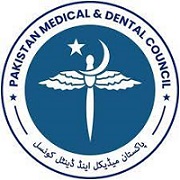FEEDING PATTERNS AMONG INFANTS IN URBAN SLUM AREAS OF LAHORE
Abstract
Objective: The present study was designed to determine the feeding patterns and associated limitations in a cohort of 210 infants.
Design: Cross sectional study through quantitative and qualitative data during their first year of life.
Place and Duration of Study: It was conducted in Govt Kot Khawaja Saeed Teaching Hospital affiliated with King Edward Medical University. Duration of study was 1 year from 1st March 2016 to 28th February 2017.
Patients and Methods: Practices related to the feeding of milk and weaning foods of 210 infants were assessed in a defined community of Lahore; 160 Infants from outdoor (Group 1) and 50 infants from immunization clinic (Group 2).
Results: 98.5 % of mothers started breast feeding. Exclusive breast fed was only 40% among them, 38% percent infants were given supplemental bottle feeding during first month. The most common reason for starting supplemental feed was perceived “insufficiency” of breast milk (60%) and work load of mother. The mean age for weaning was 4.2 months, while 36% could not be weaned up to one year of age. Weaning was earlier in infants of poor socioeconomic class. The main reason of failure of weaning was rejection of semisolid feed by infant.
Conclusion: The exclusive breastfeeding was observed in a small proportion of infants. In most cases, weaning was inappropriate and delayed. There is a great need to educate the mothers for early and exclusive breastfeeding for their infants and the use of proper weaning techniques.






